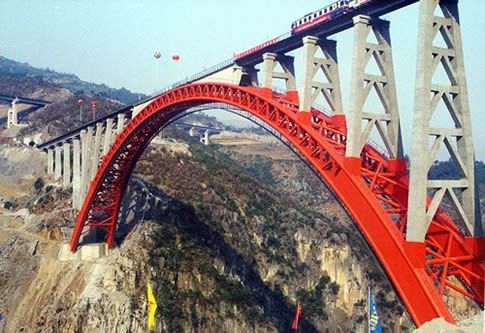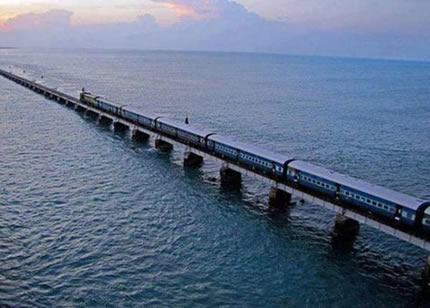 Introduction
Introduction
Railway tracks are laid after formation and bridges have been constructed. Bridges INTRODUCTION needed in Railway alignment to cross rivers, canals other water bodies, roads and gorges. First Indian Railway train ran on 14 04 1853 for which first set of Railway Bridges "tiver, constructed. Most Bridges in Indian Railways were made between 1853 and 192h. Lot of formation, bridges and track improvement in Indian Railways have been done in last 10 years. To take advantage of these improvements by way of increasing carrying capacity in Railways, it was decided some time ago to increase axle load from 20.32 to 22.82 tonnes. This resulted in a lot of financial advantages to Indian Railways. The increased axle load and longer trains improved the financial performance of Railways and made it more competitive. Hence, Long Haul operation is a trend to for it. This is called Heavy operation. There is an International Heavy Haul Association.
Indian Railways has also decided to go for Heavy Haul Operations. To implement Heavy Haul Operations a PSU named Dedicated Freight Corridor, Company (DFCC) has been established by Indian Railways. It has been decided by DFCC to run Heavy Haul trains initially with 25 tonnes axle load and finally increase axle load to tonnes DFCC will only make Backbone Railway system to which feeder routes will bring Heavy Haul Trains from loading points and finally take away Heavy Haul trains to their final destination. These feeder routes will accordingly have to be upgraded to 25 tonnes and 32.E Tonnes. Present allowed axle load on feeder routes is maximum of 22.82 Tonnes. The bridges on feeder routes will accordingly have to be first upgraded to 25 Tonnes (DFCC Loading) and finally to 32.5 Tonnes (DFCC Loading). These feeder routes will also carry passenger trains where public safety is involved hence these steps will have to be taken with great care.
 GENERAL SCENARIO
GENERAL SCENARIO
Indian Railways were constructed by many companies and princely states with different standards and materials. Nothing much is known about standards adopted but materials used in the superstructure and exposed substructure can be seen. Completion drawings of bridges are not available in all cases and thus foundation details are not always known. Railway has been carrying heavier axle loads and denser traffic with required structural analysis and elaborate health monitoring of bridges.
Replacing or strengthening Bridge Infrastructure under running traffic is time-consuming and costly as it has to be done under temporary arrangement within available engineering time. Effort and expenditure of changing o strengthening of bridges should, therefore, be done when traffic materializes. Thus for 30m times, higher axle loads may have to be permitted on existing Bridges. This requires the apt study of structural strength including fatigue strength of bridges. The funds for bridge replacement or strengthening to some extent will come from the running of higher axle loads is traffic materialises.




